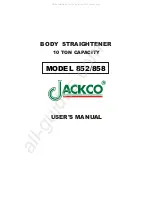
3. Theory of Operation
39
Older Ethernet and IEEE 802.3 Differences
Feature
Ethernet
IEEE 802.3
Media types
50 ohm coax only
Different types of coax, twisted pair, and
fiber optic support
Transceiver
connection
Similar but some
reserved pins
Similar but more shield pins
Frame formats
Incompatible
Incompatible
Twisted-Pair Ethernet (10BaseT) Connector
Twisted-pair Ethernet (10BaseT) uses smaller and less expensive telephone wiring that
may already be installed at most facilities. An RJ-45 connector and 10BaseT transceiver
is provided on the ZT 8995. Two unshielded twisted-pairs (22-26 gauge) are used for
each cable segment. Cable segments are arranged in a star topology (unlike thin/thick,
which are bus topologies) around a multi-port repeater. Twisted-pair Ethernet features:
•
Maximum cable segment length of 320 ft. (100 m)
•
Maximum number of nodes on a segment is one
•
Maximum number of nodes on a network is 1024
•
Maximum number of multiport repeats between any two nodes is four
Ethernet (AUI) Connector
Ethernet attaches to the ZT 8995 using a Media Attachment Unit (MAU) and an
Attachment Unit Interface (AUI) in the following manner:
•
The Ethernet cable connects to the MAU, which is a box containing transformers, an
isolating DC/DC converter, and a cable transceiver circuit. Connect the coax cable
directly to the MAU in one of the following ways:
1. Use a "vampire" or "stinger" connector to pierce a hole through the intact coax
cable and attach by pinching the cable.
2. Cut the coax cable and install coax connectors to attach to the MAU.
The first method is preferred because it causes less reflection in the cable and is
easier to install. Please see Appendices B and C for more information.
•
The AUI cable connects to the MAU. The AUI is a shielded cable with 15-pin
subminiature "D" connectors at each end.
Artisan Technology Group - Quality Instrumentation ... Guaranteed | (888) 88-SOURCE | www.artisantg.com















































